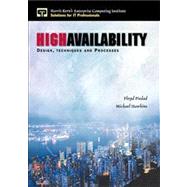Introduction
Back when the mainframe ruled the world, information technology (IT) practitioners quickly learned the value of a well-managed system. They understood the value of managing problems, changes, and other issues confronting large, mission-critical computer systems running an organization's most sensitive business functions.
When the popularity of mainframes waned in favor of less costly midrange and PC systems, IT organizations were caught in the frenzy of developing and deploying new business applications with breakneck speed. Suddenly, more computing power was available to end users, who wanted to accomplish more with it than ever before. The corporate information system grew in scope, use, and importance, with no end in sight.
Now that the dust has settled somewhat, both the IT organization and the leaders of the business recognize that an unmanaged state-of-the-art computer system can be as bad as having none at all. Symptoms of this problem with unmanaged systems manifest themselves in ballooning IT costs, overworked and demoralized IT staff, and user dissatisfaction.
This book demonstrates how to deliver maximum system availability and manageability throughout a computer system's lifecycle, from design through implementation and maintenance. We review every key technique for simplifying the management and maintenance of computer systems - including redundancy, standardization, backups, and many more. We discuss practical means of implementing these techniques to make your current and future systems far less prone to outages.
We cover technical and management issues, since you cannot achieve long-term system availability and manageability solutions without addressing both. We have written this book to benefit everyone in the IT organization. Technical staff will find practical operational solutions that can be implemented immediately. IT management will gain a better perspective of the end-to-end and interrelated requirements of running an IT shop. And Chief Information Officers (CIOs) and other senior IT executives will find forward-looking strategies for enhancing the IT infrastructure and its contribution to the corporate bottom line.
You can manage systems better if you design them with high systems availability in mind. This book will show you how to address your system availability problems, from start to finish.








